The last project I posted – the geometric concrete planters – took me considerably longer than I expected until everything worked out the way I wanted. I love the final planters, but now its time for something simple.
The idea for this DIY test tube vases came when I saw some wire silhouette vases in a store. I immediately thought – oh they look nice, why not make something similar out of wood?
Material:
- plywood (I used 3 mm birch plywood)
- glass test tube (mine were 16 x 150 mm)*
- sandpaper
- wood glue (optional)
- linseed oil (optional)
Tools:
- laser cutter or scroll saw
- belt sander (optional)
* I found that there a commonly two types of test tubes available. One type has a small protruding ring at the top and the other is completely flat on the outside. For this project, you want to get those with the small ring.
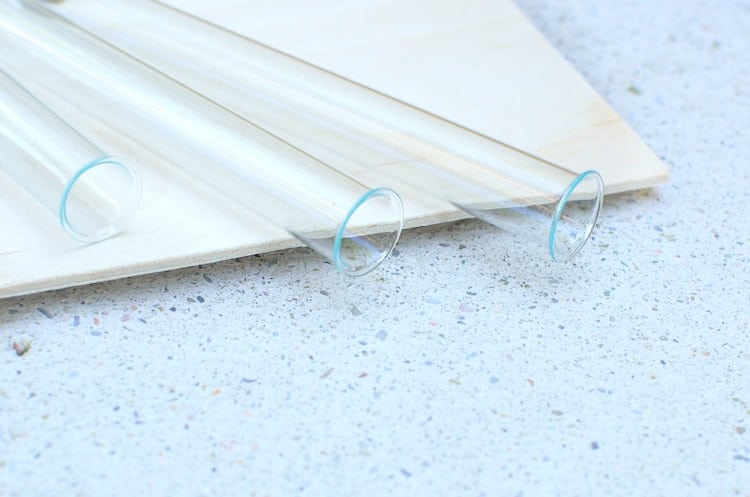
Each test tube vase will consist of four individual wooden parts:
- one top part with a hole for the test tube
- two side parts defining the sha
p e of the vase and - one bottom part
For the vases to go together, I decided to use mortise and tenon joints. The mortise and tenon joint functions by inserting one end of a piece of wood into a hole in another piece of wood. In the top and bottom part, there will be two rectangular cutouts and on both ends of the side parts, there are the corresponding tenons.
If you don’t use a laser machine for the cutting you could make the design easier to cut by omitting the cutouts and tabs and just glue the parts together.
Designing the Test Tube Vases
The first step before drawing the design is to measure the outside diameter of your test tube and its length. My test tubes have an outside diameter of 16 mm (0.6 in) and are 150 mm (5.9 in) long.
All the design work was done in Inkscape – an open source vector drawing software.

I started with the circular top part. It is made up of two circles. The inner circle should have the same diameter as the outside of your test tubes. I decided to make the silhouette 7 mm wide and so the diameter of the outer circle is the inner circle plus 14 mm.
For the bottom, I used a bigger circular shape and positioned it below the top part. The distance between the two should be at least the length of your test tube.
For the side parts, my process was to first just draw a single line going from the outside edge of the top circle to the outside edge of the bottom circle. Next, I added additional path nodes and curves to get a bottle silhouette. You can play around with different shapes here. Once I was happy with the shape I set the stroke width to 7 mm and then used the “Stroke to Path” command to turn the outline into a path.
Drawing the mortise and tenon joints
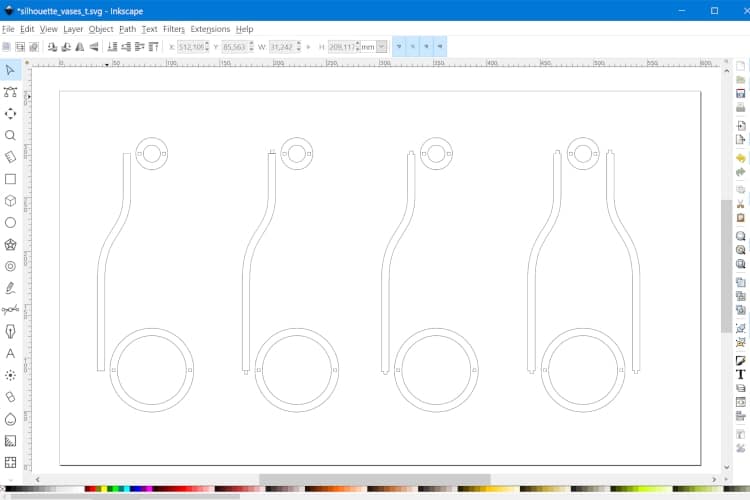
First I draw two 2.8 mm squares for the holes in the top and bottom part. Why did I make them 2.8 mm? Because the plywood I use is 3 mm thick and the 0.2 mm are to compensate the cutting kerf (the material that gets removed during cutting). I knew from past cutting tests on the laser I use, that a kerf setting of 0.2 mm will produce a tight fit. So ideally the final parts will hold together by press fit without any glue.
Afterward, I draw two squares which will form the tenon. The rectangles have a size of 3.2 mm. Again 3 mm because of the plywood and as this time we are not cutting a hole but a tab, the 0.2 mm for the kerf correction are added.
One tenon rectangle gets attached to the top of the side part and one to the bottom. By selecting all three elements and using the “Union” command, I merged them into one path. The last step was to duplicate and mirror this path.
Below you can download the 7 different silhouette vase designs I created. Use them, customize them or make your own shapes!
Firing up the Laser for some Cutting
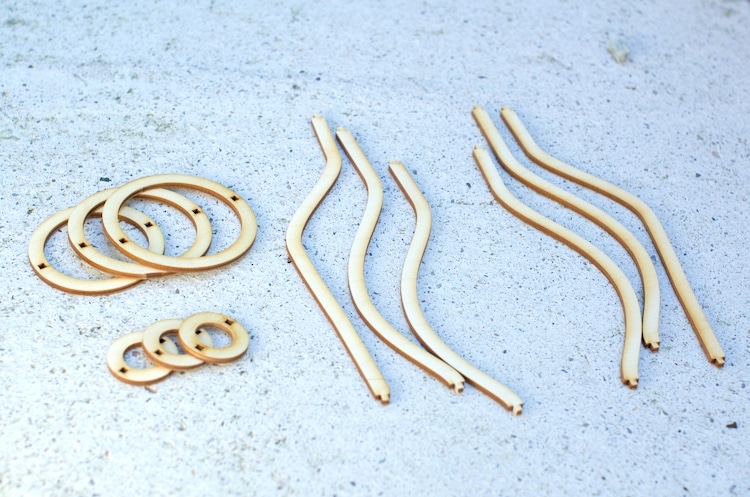
I used the laser cutter at my local makerspace to cut all the wooden parts. When cutting manually, I recommend to print out the design template and then spray mount it onto the wood to have a guide for cutting.
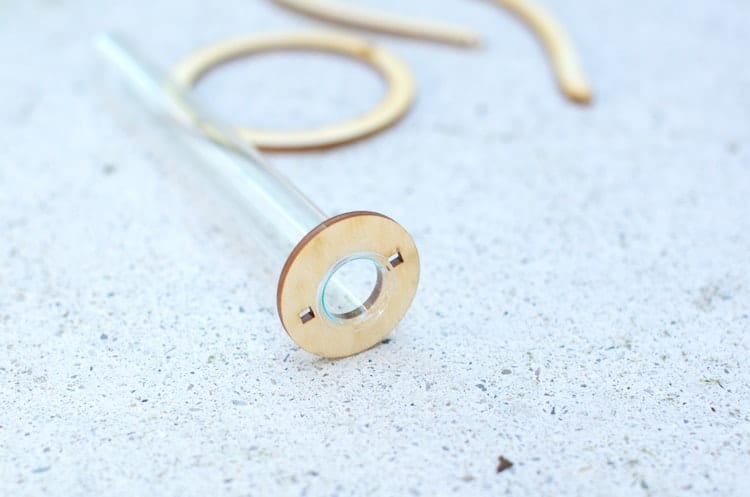
Sanding and Adding a Finish
With the cutting done, grab your preferred sanding tool and smooth the surface of your wood. I started with a 100 grit sandpaper and moved up to 180 grit. I did not sand the laser cut edges because I liked the contrast of the light and dark wood.
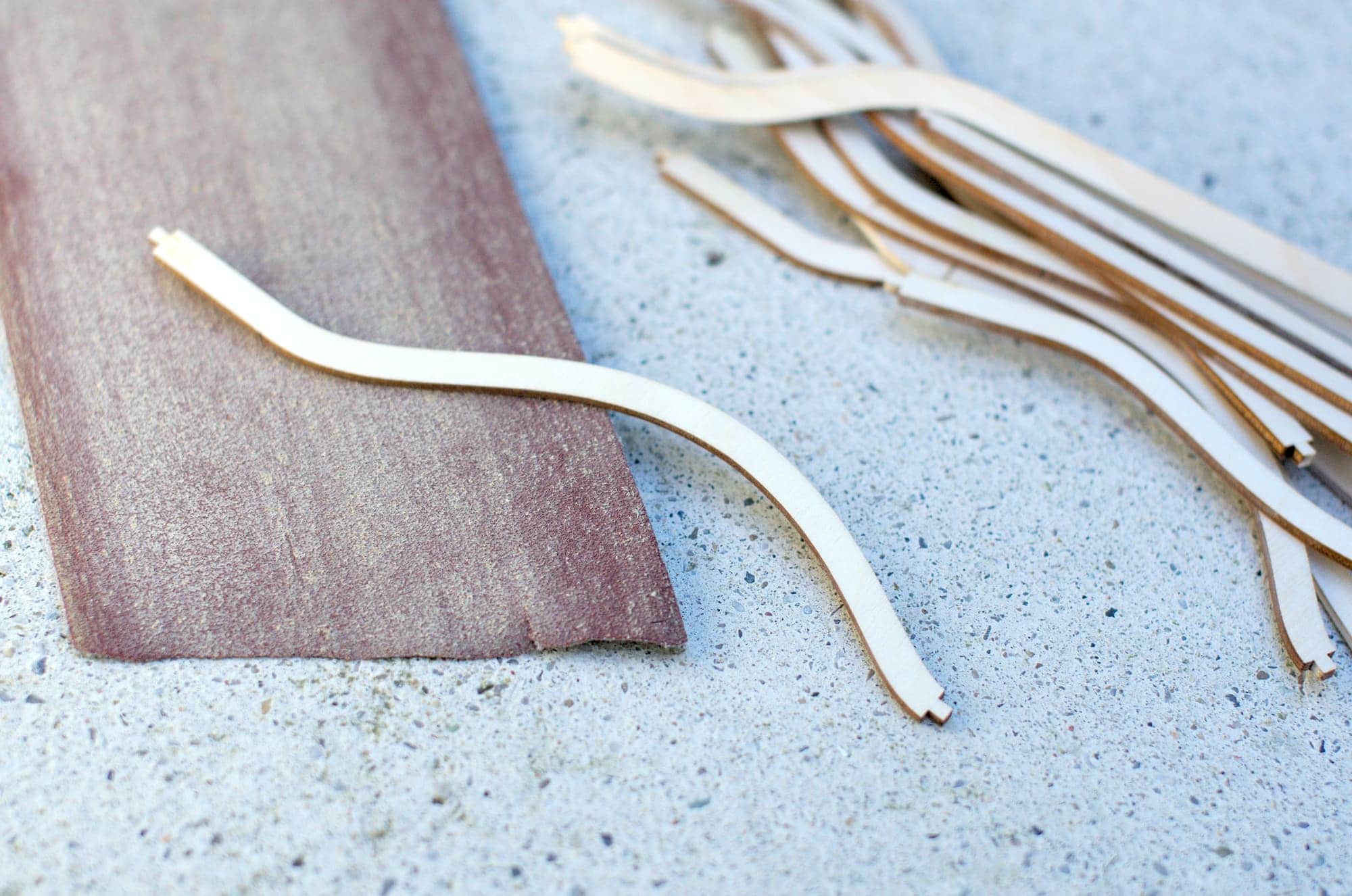
The finish is entirely up to you! I personally like natural finishes and choose to use boiled linseed oil. This will bring out the grain a bit and gives the vases a matte shine. Oiling also adds some protection to the wood so that an accidentally spilled drop of water won’t leave a permanent mark.
Assembling the Test Tube Vases
Assembly is pretty easy. Just connect the four wooden parts for each vase and then insert the test tube. If your kerf settings were right the parts can be press-fitted and will hold together without any glue. In case the fit is too loose just add a drop of wood glue. If the fit is to tight, lightly sand down the edges of the tenons.
Add Flowers or Leaves and Enjoy
For the last step, all that’s left to do is to add some plants and water to the vases and enjoy your work. I like to arrange the test tube vases in little groups, mixing different shapes and sizes.
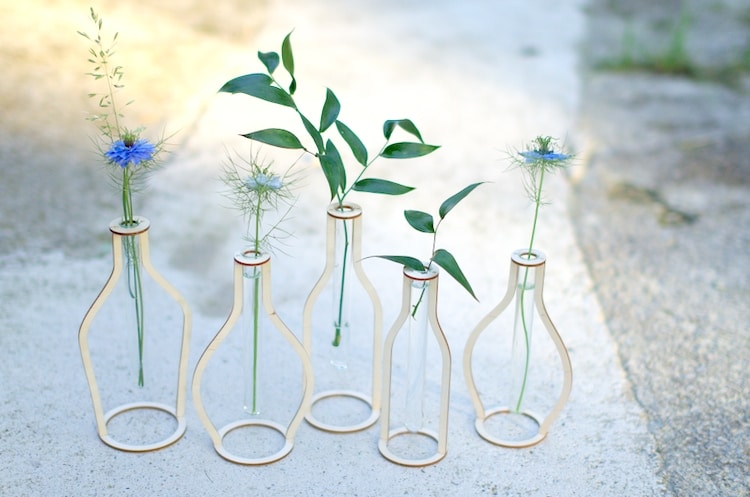
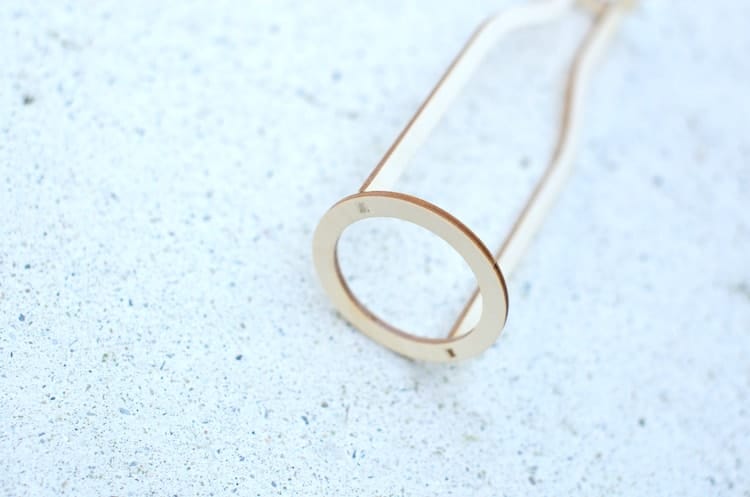
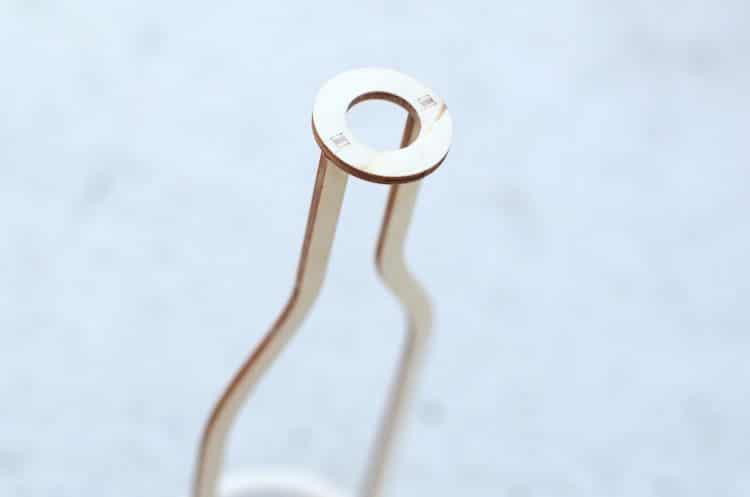
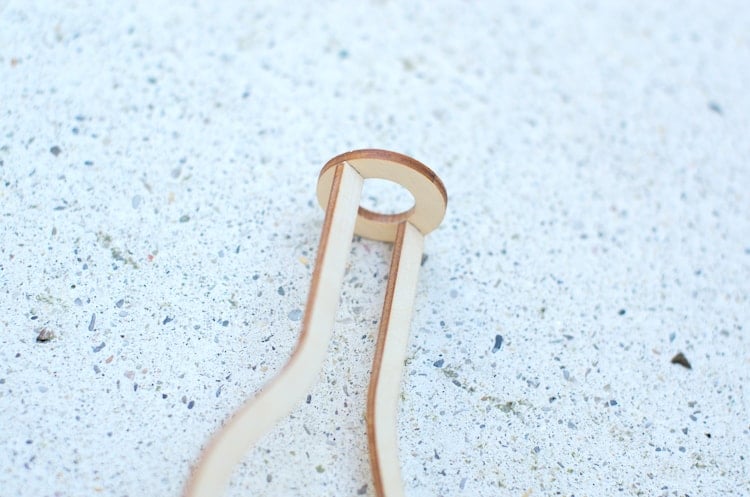
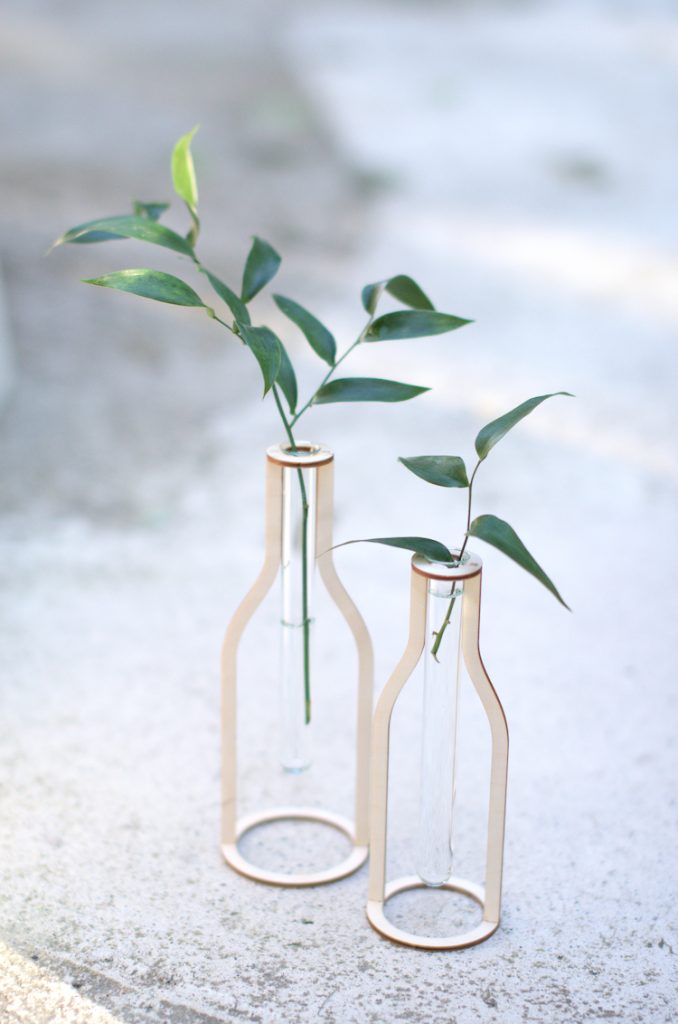
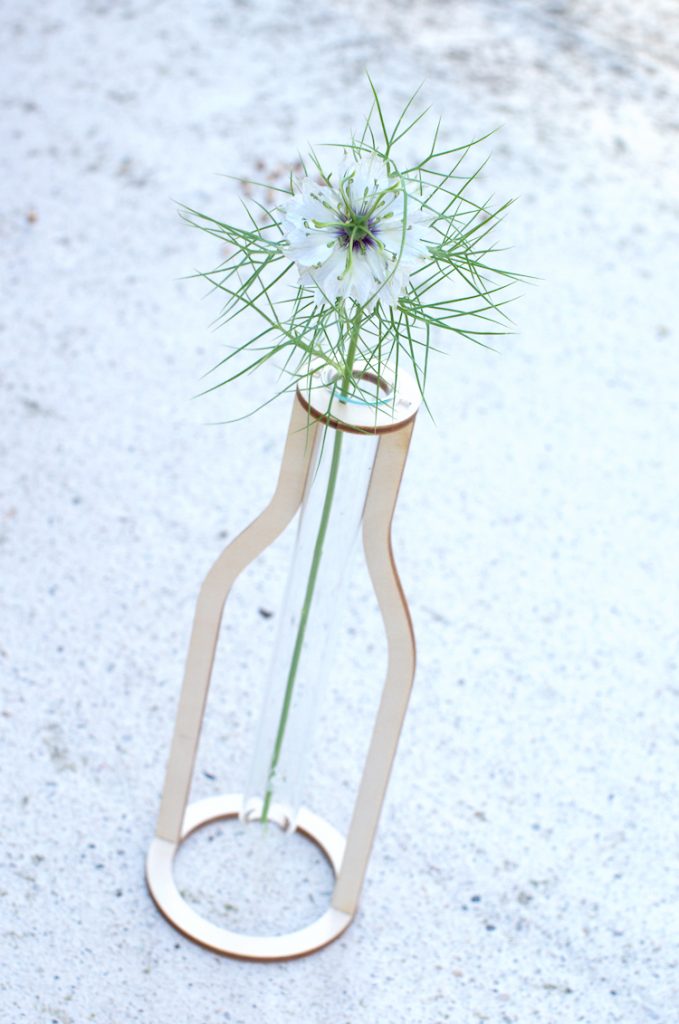
Your vases are great – thank you for sharing your instructions. What size test tubes did you use and where did you find tubes that did not have imprints on them?
Thanks 🙂 The test tubes I used were 150 mm long and had a diameter of 16 mm. I bought them on Amazon in a larger batch (I think 20 or so). I have also seen tubes without imprints in arts and crafts stores.
The vases are so creative! I’m very impressed with how easy you made them. I’ll try to find the test tubes with 150 mm long. Do you have any links?
Sorry for my delayed reply. Here are two links to 150mm test tubes:
https://www.amazon.com/SEOH-pack-Borosilicate-Glass-150MM/dp/B00JKUHEMI/ref=sr_1_34?keywords=test+tube+glass+16×150&qid=1583765342&sr=8-34
https://www.amazon.com/Test-Tubes-Borosilicate-Glass-150mm/dp/B07RN1ZH37/ref=sr_1_38?keywords=test+tube+glass+16×150&qid=1583765342&sr=8-38
You might also find test tubes in local home decor or glassware shops.
Happy to have found your site.
Excellent tips, assistance and easy to navigate.
thanks for the nice design.is it possible to get them in PNG?
Beautiful, and graceful!
So – curious – did you consider doing them with three or four arms?
I find that tenons and holes can be tricky to use for “right angle support”, but three or four arms would be much more self aligning.
Thanks. Originally I was going for a minimalist look – which was the main reason for the two arms. In my experience they work well with smaller flowers that arn’t too heavy. But you are right a three or for armed design is more stable and self aligning. The good thing is it is pretty simply to just add holes for one or two extra arms…